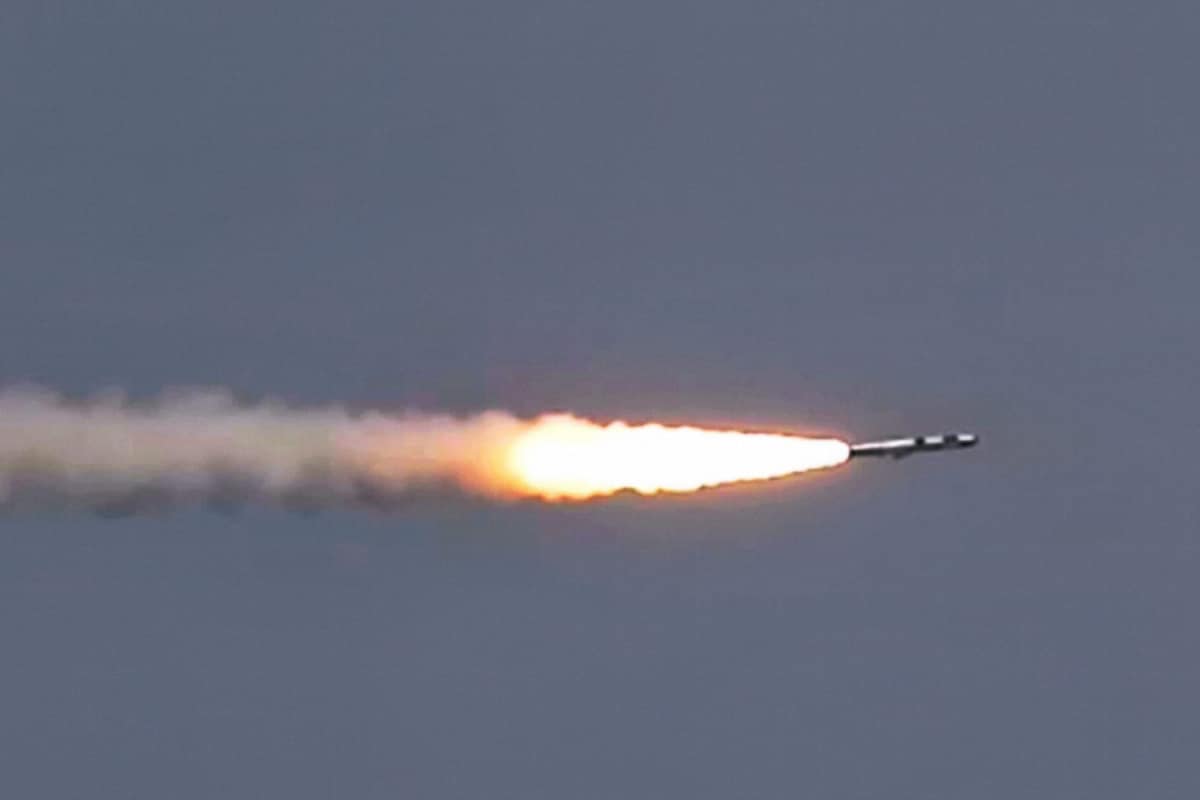

India's defense capabilities have taken a significant leap forward with the reported successful testing of a new hypersonic missile, known as the Extended Trajectory Long Duration Hypersonic Cruise Missile (ET-LDHCM). Developed indigenously under the Defence Research and Development Organisation's (DRDO) Project Vishnu, this missile boasts capabilities that surpass existing systems like the BrahMos and Agni missiles, marking a new era in India's strategic deterrence.
The ET-LDHCM's most striking feature is its speed, reportedly reaching Mach 8, or approximately 11,000 km/h. This is significantly faster than the BrahMos, which travels at Mach 3 (around 3,700 km/h). Such speed drastically reduces the time available for enemy defense systems to react, enhancing the missile's strike effectiveness. The missile can reportedly strike targets 1,500 kilometers away. This extended range provides India with a greater strategic reach, allowing it to engage targets deeper within enemy territory. The Agni-I, for comparison, has a range of 700-1200 km.
The ET-LDHCM is designed for stealth, precision, and flexibility. Its low-altitude flight capability makes it difficult to detect by radar, while its advanced guidance and control systems enable evasive maneuvers and precise targeting. The missile can carry a payload of 1,000 to 2,000 kilograms and is designed to deliver both conventional and nuclear warheads. Furthermore, it can be launched from land, sea, or air platforms, providing adaptability in various battlefield conditions. This versatility is a significant advantage over some existing systems, enhancing India's operational flexibility.
The ET-LDHCM's development is particularly significant considering the growing global tensions and the increasing importance of hypersonic technology. With only a handful of nations, including Russia, the United States, and China, possessing operational hypersonic cruise missile technology, India's success places it among an elite group. This achievement enhances India's strategic deterrence, particularly in relation to Pakistan and China, while countering China's growing influence in the Indo-Pacific region.
The missile is engineered to withstand extreme thermal stress, maintaining performance stability at temperatures up to 2,000°C during hypersonic flight. This capability is crucial for sustained speed and accuracy. The ET-LDHCM is powered by a scramjet engine that uses air-breathing propulsion, relying on atmospheric oxygen rather than a traditional rotating compressor. This allows it to maintain hypersonic speeds for extended durations.
The DRDO is also working on a Hypersonic Glide Vehicle (HGV), which is in a more advanced stage of development, with developmental trials expected to be completed in the next two to three years. The DRDO had previously tested the Hypersonic Technology Demonstrator Vehicle (HSTDV) in 2020, achieving sustained scramjet combustion for over 1,000 seconds in early 2025. These advancements demonstrate India's commitment to developing a comprehensive hypersonic arsenal.
While the BrahMos-II, a hypersonic variant of the BrahMos missile, is also under development with a targeted speed of Mach 7-8 and a range of 1,500 km, the recent ET-LDHCM test signifies a major breakthrough in India's indigenous hypersonic capabilities. The ET-LDHCM will strengthen India's strategic strike capability by enabling deep precision strikes against critical infrastructure and military targets.
India's successful test of the ET-LDHCM marks a significant milestone in its pursuit of advanced military technologies. This hypersonic missile, with its exceptional speed, range, and versatility, provides India with a potent strategic asset that enhances its deterrence posture and strengthens its position in the global security landscape. As India continues to develop and refine its hypersonic capabilities, it is poised to play a key role in shaping the future of military technology and regional security dynamics.